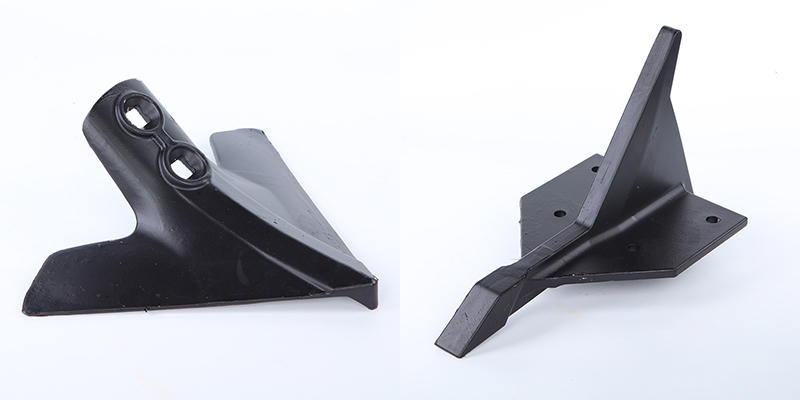In the smelting of stainless steel, the source of nickel metal is currently available in three main channels: nickel pig iron, pure nickel, and waste stainless steel. According to the fluctuation of the price of each raw material in different periods, the steel mill adopts different proportioning methods to produce to obtain the maximum profit. This article will focus on the current production period, the comparison of the production cost of various raw materials in stainless steel.
First, the cost of high nickel iron and nickel plate comparison
The advantage of high nickel pig iron relative to pure nickel is that it can provide steelmaking pig iron. At present, the price of steelmaking pig iron is 2,530 yuan / ton, taking 12% of high nickel pig iron as an example. The current price in Jiangsu is 1380 yuan / nickel. For high-nickel iron, the value of steel-making pig iron given by each nickel point is 181 yuan. That is to say, the high nickel pig iron price is higher than the nickel plate range of 181 yuan / nickel, then the high nickel pig iron still has a cost advantage. As far as the current situation is concerned, the spot nickel price in the Yangtze River is 126,400 yuan / ton, the difference between the two is 116 yuan / nickel, less than 181 yuan. Therefore, for smelting stainless steel raw materials, high nickel iron has a cost advantage over nickel sheets.
Second, the cost of scrap stainless steel and high nickel pig iron
Compared with high nickel pig iron, waste stainless steel contains not only nickel metal but also chromium metal. The main components of the waste stainless steel are as follows: nickel metal mass fraction is 8%, chrome metal mass fraction is 17%, iron mass fraction is 73%, and other mass fractions are 2%. For the nickel metal in scrap steel, the bidding price of the June scrap in June is 13900 yuan/ton, and the value of 8% nickel iron in the scrap is 11,120 yuan, and the price of nickel nickel in the scrap is 1390 yuan/nickel. It is basically equivalent to the current price of 12% high nickel pig iron of 1380 yuan/nickel in Jiangsu.
The lack of stainless steel scrap resources in China, coupled with the high energy consumption of full scrap smelting, and the poor quality of scrap steel and the harmful elements of molten steel, etc., in the case that the scrap price advantage is not enough, generally do not adopt the production model of full-waste stainless steel. According to the statistics of the 51bxg Industry Research Center, in the smelting of stainless steel, the proportion of waste stainless steel raw materials reached 60%, which is close to the line. The average utilization rate of waste stainless steel in the whole society is about 18%.
Third, low nickel pig iron + pure nickel mode
For the low nickel pig iron and pure nickel models, assuming a low nickel pig iron (1.6%) + pure nickel mode with the same composition of high nickel pig iron (12%), then 0.8943 tons of low nickel iron and 0.1057 tons of pure nickel are required. At present, the price of low-nickel iron in Shandong market is 3,400 yuan / ton, and the price of spot nickel in the Yangtze River is 126,400 yuan / ton. Therefore, if we compare this way, the price of nickel-based pig iron reaching 12% is 16401.1 yuan, equivalent to 1366.8 yuan. /nickel. At present, the price of 12% high-nickel iron is 1380 yuan/nickel, and the comparative advantage is not obvious.
Fourth, medium nickel iron + pure nickel mode
For the production mode of medium nickel iron plus pure nickel, assuming the "medium nickel iron pig iron (5%) + pure nickel" mode, equipped with the same composition of high nickel pig iron (12%), then the need for medium nickel iron 0.926 tons, pure Nickel 0.074 tons. At present, the price of ferronickel is 1340 yuan/nickel, and the price of spot nickel in the Yangtze River is 126400 yuan/ton. Therefore, according to this ratio, the price of nickel pig iron reaching 12% is 15557.8 yuan, equivalent to 1296.5. Yuan/nickel. In contrast, the medium-nickel iron + pure nickel production mode has a higher advantage in the ferronickel production mode, and the single nickel point is 84 yuan lower.
The discussion on the proportioning mode of the above-mentioned several kinds of stainless steel production materials not only has a certain guiding significance for the steel mill to control the production cost, but also can judge the speed of the subsequent rise and fall by the difference of the price difference of various raw materials in different periods. the trend of.
Since the beginning of the 21st century, with the rapid development of China's economy and the continuous improvement of people's living standards, the demand for stainless steel has become increasingly strong. Under this background, domestic stainless steel manufacturers are everywhere. After nearly ten years of development, China's stainless steel production capacity accounts for the world's total production capacity. Half, but in recent years, due to the slowdown in economic growth, stainless steel competition has intensified, the industry is facing major changes, and the upcoming stainless steel futures will accelerate this change and have a major impact on steel mills. There are mainly the following aspects:
First, increase the channels of selling goods
As a producer, steel mills generally sell direct sales or agents, and the listing of stainless steel futures has added a sales channel for steel mills, giving steel mills a choice, even for the next few months. Can be sold in advance. Unlike the hedging, the sale of goods in the futures market involves delivery, and the hedging will not necessarily be delivered. At the same time, the futures market also brings new buyers outside the industry to the steel mills – financial capital, which is equivalent to a new type of customer and sales channel for steel mills. This will lead to an increase in social inventories, thereby increasing the function of the stock reservoir and increasing the market's ability to self-regulate.
Second, partial transfer of pricing power
At present, the price of the stainless steel spot market is mainly controlled by several major steel mills. The steel mills report the guidance price every day, and then the traders fine-tune according to the guidance price. The price of stainless steel is generally affected by the steel mills, especially the head steel mills. Big. But in the past two years, this trend is being weakened due to the relative supply surplus. However, with the introduction and development of stainless steel futures, stainless steel futures trading will be based on the industry chain and a large number of institutions, natural persons in the market for hedging, speculation, arbitrage trading, compared to the electronic trading that has been carried out for many years, due to market capacity Larger, participants are more widely able to formally reflect the market's supply and demand relationship and expectations. Steel mills will further weaken the pricing power of stainless steel, and institutional speculative funds and downstream participants will also have an impact on stainless steel prices. In addition to the equilibrium of the voices of the parties involved in the industrial chain pricing, the overall pricing power of some industries will also be shared by financial capital.
Third, it has a guiding role in the operation of steel mills
Due to the price discovery function of futures, steel mills have relatively accurate expectations for the overall trend of future prices, and steel mills can reasonably formulate production and operation plans based on such expectations. First of all, it can guide the rhythm of steel mills selling goods: when the price of stainless steel rises and the supply of stainless steel is in short supply, steel mills can choose to sell more spot and near-month contracts; when the price of stainless steel is low, the spot supply is too high, but when the price is high, the price is higher than the spot price. Steel mills can consider selling long-term contracts. Secondly, the production plan can be determined according to the price of the futures near the far month: when the futures contract price is in the positive market, you can choose to increase the output, and sell more goods to the far-month contract to preserve the value, thus improving the capacity utilization while ensuring reasonable Profit; when the price is at a low level and the futures contract is in a reverse structure, the production inspection can be considered. Finally, we can determine the inventory and output according to the change of futures price: when the price of stainless steel starts to rise from the low level, the steel mill can choose more raw materials and stocks, and throw the goods in the far month; when the price of stainless steel falls from the high level, it should be considered. Reduce raw materials and inventory.
4. Providing a platform for steel mills to avoid risks
Stainless steel futures bring huge profits and risks to some speculators and also provide a platform for risk avoidance for some stainless steel spot traders and steel end users. In the process of rising stainless steel prices, due to the asymmetry of information, most stainless steel end users will gradually increase inventory, and this high-priced inventory will be like a time bomb, once the price of stainless steel falls sharply, and it is a kind In the short-term, irreversible price declines, then after this round of price decline, the company will have a very large loss in the process of destocking. For example, in May 2014, the price of stainless steel was more than 22,000 yuan a ton. By the end of 2015, the price of stainless steel fell to nearly 10,000 yuan per ton. The sharp price fluctuations had a huge impact on the profit and cash flow of steel mills. With the listing of stainless steel futures, steel mills can use hedging operations in the futures market to reduce the impact of price fluctuations on steel mills and avoid price risks. Just focus on enterprise management and production.
In general, the listing of stainless steel futures has advantages and disadvantages for steel mills. The key is whether steel mills' attitude towards stainless steel futures is to refuse participation or active participation, and whether relevant talents and corresponding management methods are reserved. The introduction of stainless steel futures will accelerate the transformation of steel mills, and it is likely that the weaker and stronger of the strong will emerge. Some steel mills or rolling mills that are not adapted to the new situation are likely to be eliminated.






